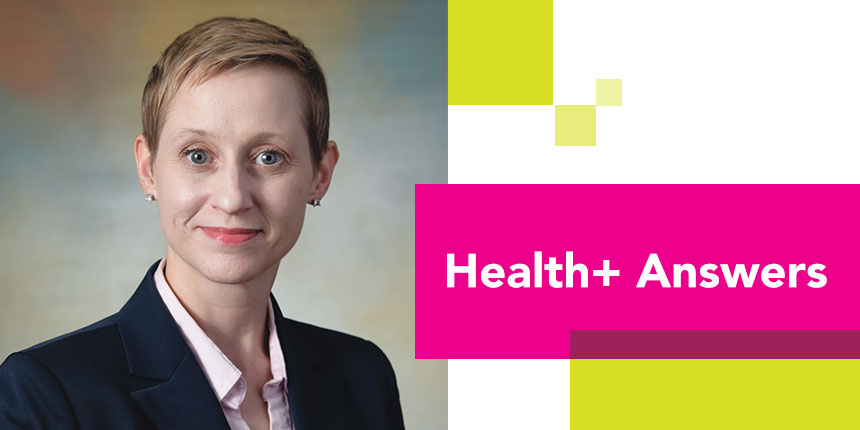Health+
Get Checked for Lung Cancer

Dr. Tammy Gleeson, Thoracic Surgeon, discusses how Southcoast’s Lung Cancer Screening Program helps people at high risk catch cancer early
Lung cancer is one of the four most common types of cancer, and it is the leading cause of cancer-related deaths among men and women in the United States. Yet, it is the only cancer without a widely adopted preventative screening test. To help fill this gap for our patients, Southcoast offers the Lung Cancer Screening Program, led by thoracic surgeon Tammy Gleeson, DO. Here, Dr. Gleeson tells Health+ more about the program:
Health+: What is the goal of the Lung Cancer Screening Program?
Dr. Gleeson: The goal of the Lung Cancer Screening Program is to identify patients who fit a high-risk category for lung cancer and who do not have symptoms and screen them, so we can find the lung cancer early enough that they can be treated surgically and have basically a normal life expectancy. We use a low-dose CT scan of the chest, which has been proven to find early lung cancers and abnormal nodules, with the same amount of radiation as a regular chest X-ray.
H+: Who does the program benefit?
Dr. Gleeson: Anybody who is high-risk, which means they fit three criteria. They must be 55 to 77 years old; an active smoker or have quit less than 15 years ago; and have a smoking history of 30 pack years or greater, which is determined by the number of packs per day they smoke times the number of years they have been smoking.
H+: How is lung cancer treated when it’s caught by the screening?
Dr. Gleeson: A benefit we have now is that we don’t do large, open incisions. Everything is minimally invasive, using scopes and ports through small incisions, and I have added robotic equipment to my procedures. The advantage is that we are not cutting the major muscle, spreading ribs or creating pain issues after surgery. With the small ports, we’re just making a few 5- to 10-millimeter incisions in the skin, where we can work between ribs and muscle fibers to dissect the cancer and affected lymph nodes. Patients are going home from the hospital earlier and have faster recovery times after minimally invasive surgery compared to open surgery.
H+: Is there more to the program than screenings?
Dr. Gleeson: A lot of people who come to us for the lung cancer screening are active smokers, so part of the screening program is talking to them about tobacco cessation options. We talk to them about how much they smoke and what types of quitting measures they’ve tried in the past. Then we go through all of the available options to decide which one is best for them. We also have our Quit Works Program, where they can contact a sponsor who can help them through stressful times and offer support and resources for free if they can’t afford them.
Another part of the program includes talking to patients about the benefits of quitting smoking, such as the decreased risk of developing many other cancers, including head, neck, throat, bladder and pancreatic cancer, and the decrease in risk for heart attack and stroke.
H+: Why did you decide to join Southcoast and the program?
Gleeson: I’m originally from Michigan, but I moved here from Maine and started working at Southcoast in June, because I thought it would be a more robust practice. I also have a lot of friends in the area and who work at Southcoast who have always spoken very highly of Southcoast Health System. I always wanted to live on the East Coast, and this area is gorgeous. I can combine living near the water with working in a strong hospital program that wants to continue to expand and take care of patients in a better way. Southcoast is very open to ideas and implementing those ideas that advance patient care.
Learn more about Southcoast’s Lung Cancer Screening Program.
Lung Cancer Screening Program from Southcoast Health on Vimeo.
